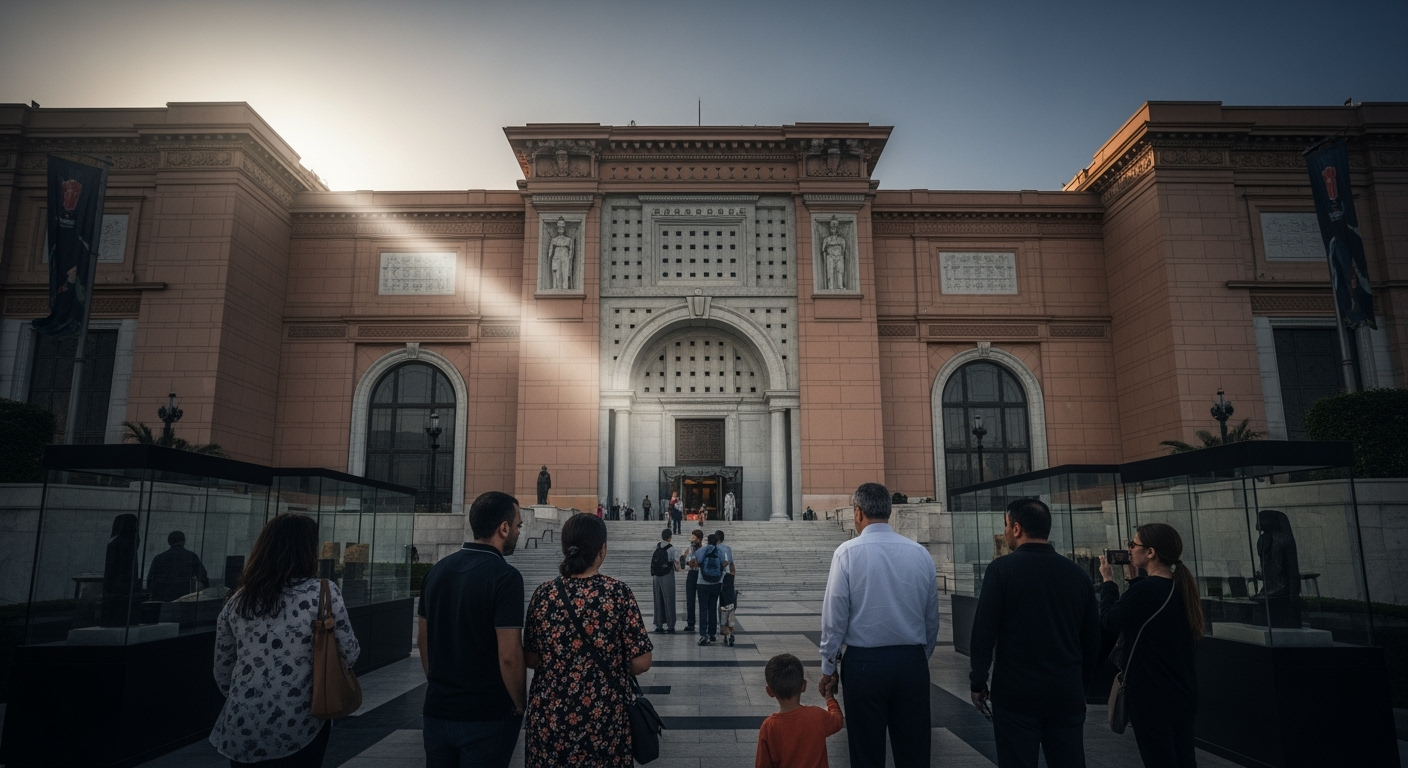Related Articles

Shah Rukh Khan: The Enduring Reign of Bollywood's 'Badshah' at 60

The Paradox of Fear: Unveiling How Horror Films Engage and Transform the Human Brain





GIZA, EGYPT – November 4, 2025 – After decades of ambitious planning, intricate construction, and numerous delays, the Grand Egyptian Museum (GEM), the world's largest archaeological museum dedicated to a single civilization, officially opened its doors to the public today. Located just two kilometers from the iconic Giza Pyramids, the colossal institution promises to redefine the global experience of ancient Egyptian history, poised to become a cornerstone of cultural tourism and a symbol of Egypt's enduring legacy.
The full public unveiling follows an exclusive inauguration ceremony held on November 1, attended by a gathering of world leaders, dignitaries, and cultural representatives. The grand opening of the museum to the public today, November 4, holds symbolic significance, coinciding with the 103rd anniversary of Howard Carter's discovery of Tutankhamun's tomb. This momentous occasion marks the culmination of a project spanning over two decades and a monumental investment exceeding $1 billion, largely funded through international cooperation, notably with Japan's International Cooperation Agency (JICA).
The Grand Egyptian Museum is not merely a larger exhibition space but a transformative cultural landmark designed to safeguard and present Egypt's unparalleled heritage in an immersive and technologically advanced setting. Its strategic location near the Giza Pyramids offers visitors a unique historical continuum, enhanced by a new tourist walkway connecting the two ancient and modern marvels. The museum's vast expanse of half a million square meters houses over 100,000 artifacts, with approximately 20,000 of these treasures being displayed for the very first time.
Central to the GEM's allure is the complete collection of King Tutankhamun's funerary treasures. All 5,000-plus items from the boy pharaoh's tomb, including his world-famous golden mask and throne, are now united and exhibited together for the first time since their discovery. This unprecedented assembly offers an unparalleled insight into the life and afterlife of one of ancient Egypt's most enigmatic rulers, providing a narrative depth previously impossible.
Beyond the Tutankhamun galleries, visitors are greeted by the awe-inspiring Grand Hall (Atrium), featuring a transparent facade and glass roof that frame breathtaking views of the Giza Pyramids. Dominating this space is the colossal 83-ton statue of Ramesses II, setting a majestic tone for the journey through time that awaits. The Grand Staircase, another architectural marvel, ascends through the museum, presenting more than 60 artifacts arranged thematically, guiding visitors through a chronological exploration of royal imagery, divine houses, and funerary traditions. Other significant pieces, such as the newly restored second solar ship of Khufu and collections belonging to Queen Hetepheres and Yuya and Thuyu, also find new homes within the GEM's state-of-the-art galleries.
The journey to the GEM's opening has been long and arduous, marked by a series of ambitious goals and significant obstacles. First announced in 1992, with construction commencing in 2005, the project faced numerous setbacks over the years, including funding challenges, periods of political instability following the 2011 Arab Spring, and complex technical issues inherent in constructing a facility of this magnitude. Despite these hurdles, the vision persisted, driven by a national imperative to create a modern, world-class institution capable of adequately showcasing Egypt's immense archaeological wealth, which had outgrown the capabilities of the historic Egyptian Museum in downtown Cairo.
The dedication to completing this monumental project was unwavering. In 2024, the GEM received the prestigious EDGE Advanced Green Building Certification from the International Finance Corporation (IFC), becoming the first museum in Africa and the Middle East, and one of only a few worldwide, to achieve such recognition. This certification highlights the museum's innovative, climate-smart design and construction, which enable it to cut energy use by over 60 percent and reduce water consumption by 34 percent compared to similar buildings. Sustainability features, including a reflective roof, external shading for thermal comfort, energy-efficient lighting, and smart meters, underscore a commitment to environmental responsibility alongside cultural preservation.
The museum also boasts one of the world's largest and most advanced Conservation Centers, established in 2006 and opened in 2010. This facility houses 19 specialized laboratories dedicated to the restoration and preservation of diverse artifacts, from mummies and wood to stone and metal, emphasizing preventive conservation and scientific documentation.
The full opening of the Grand Egyptian Museum is widely anticipated to be a "game-changer" for Egypt's vital tourism industry. Tourism historically contributes significantly to Egypt's gross domestic product, with projections indicating further growth due to the GEM. Experts predict the museum will attract millions of visitors annually, with some forecasts suggesting up to 8 million visitors per year, potentially increasing to over 25 million by 2026, and contributing to a total of 18 million tourist arrivals by the end of 2025.
This influx of visitors is expected to extend the average length of stay for tourists in Cairo and increase per-visitor spending, providing a substantial boost to the local economy and creating direct and indirect employment opportunities in related sectors like transportation and hospitality. The government's vision to welcome 30 million annual visitors by the early 2030s is supported by the GEM, alongside major infrastructure upgrades at airports and transport networks around Giza.
Beyond economic benefits, the GEM is positioned as a powerful tool for cultural diplomacy and a symbol of Egypt's "soft power." By presenting its ancient heritage through integrated displays, digital technologies, and interactive media, the museum aims to foster a deeper understanding and appreciation of Egyptian civilization globally. It serves as a bridge between Egypt's glorious past and its aspirations for a modern future, reinforcing Cairo's role as a global cultural capital.
The full opening of the Grand Egyptian Museum represents a monumental achievement for Egypt and the world. It is a testament to national resolve, international collaboration, and a profound commitment to preserving and sharing human history. The GEM stands not only as an architectural marvel and a repository of priceless artifacts but also as a beacon of cultural diplomacy and a significant economic engine. As visitors begin to pour through its grand entrances, they embark on a journey that transcends time, connecting directly with the profound legacy of ancient Egypt and witnessing a new era for cultural institutions globally.